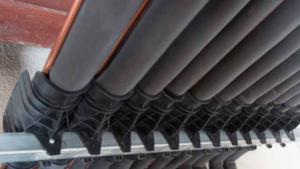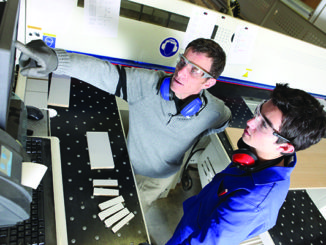 In the fields of refrigeration, air conditioning, and plumbing, pipe insulation can be compared to our skin which protects what is ‘’inside’’ of it. In our case, the ‘’inside’’ refers to the pipes carrying the heat transfer fluids, which we need to protect.
In the fields of refrigeration, air conditioning, and plumbing, pipe insulation can be compared to our skin which protects what is ‘’inside’’ of it. In our case, the ‘’inside’’ refers to the pipes carrying the heat transfer fluids, which we need to protect.
Upon taking possession of a building, everything may seem fine to the new owner. However, as the building gets older, the contact points between the insulated piping and their suspension elements can quickly wear out due to inadequate pipe supports or the absence of such pipe supports.
Over the years, manufacturers of heating, air conditioning and refrigeration equipment have made great efforts to design more efficient units in order to save energy. Unfortunately, the delivery of this energy to its final destination is partly compromised by damaged pipe insulation at the contact points between the pipes and their suspension elements.
As a result, gains or loss of energy are associated with above pipe insulation damages. On the heating side, hard-won energy savings end up in BTUs lost at the contact points whereas on the refrigeration side, the loss of cold at the contact point may cause moisture and mold in the insulation, ice formation, and premature corrosion of the pipe inside the insulation. In both cases, systems efficiency is reduced.
It is well known that pipe runs are submitted to severe linear movements due to thermal expansion and contraction, depending on the type of system used. Therefore, adequate pipe insulation protection at the contact point of suspension elements is essential to avoid insulation damage.
The following examples clearly show some typical linear movement observed in a 200 feet (61 meters) length of copper tubing used in a refrigeration application:
Low temperature refrigeration: 2.75 inches (69 mm) of thermal expansion
Hot-gas defrosting system: 4.25 inches (106 mm) of thermal expansion
In a supermarket, it is not unusual to find refrigeration pipe runs close to one mile (1.6 km) in length or even longer. The maximum distance allowed between pipe supports being 8 feet (2.43 m), we end-up with hundreds of contact points to protect.
If the pipe saddles located at these contact points are not adequate or poorly installed they become a serious source of leakage and potential energy loss.
According to the Food Market Institute (FMI), 13 per cent of the leakages in a refrigeration system are caused by the piping—(48 per cent at the evaporator, 36 per cent in the mechanical room, and 3 per cent at the condenser). These leakages are mostly located at the contact point between the piping and the pipe supports.
If your insulated pipe comes in direct contact with a pipe support or the threaded rod supporting it, damage to the insulation will occur and eventually cause a leakage of the pipes due to the friction resulting from the movement of the fluid inside the pipe, which creates vibrations and thermal expansion.
We all know that a compressed insulation material loses its insulation properties. A good pipe support system is therefore essential for the following reasons:
- It protects the insulated pipe by spreading the load over a wider area to avoid insulation compression from the weight of the pipe plus the added weight of the carried fluid.
- It prevents tearing and damage to the insulation and/or vapour barrier caused by thermal linear expansion and vibrations.
There are several efficient ways to overcome the problems described above. The most efficient types of pipe protection available on the market today are:
- Pipe saddles located underneath the piping insulation at the contact point of the suspension elements
- High-density Insulation jackets replacing standard insulation at the contact point of the suspension elements
- Insulated piping completely covered with metallic or PVC type jacketing
For all applications and under every circumstance, please ensure that:
- The product was tested and approved by a recognized certifying laboratory such as UL, ULC, and CSA to ensure consistency and uniformity of the product being installed.
- The product is suitable for inside and outside installations and resistant to UV rays.
- The product operating temperature range specifications are compatible with the environment where it will be used for maximum efficiency and durability.
- The product is food-contact approved (if required) when used in the food processing industry.
- The pipe saddle is fixed to its supporting system.
- The pipe saddle has a minimum length of 12 ‘’ (300 mm) to spread the load of the insulated pipe.
- The pipe saddle has sliding lips design at both ends to avoid insulation damage due to linear movement of the pipe and its insulation.
- The product can be painted without reducing its mechanical properties.
- The product enhances appearance, cleanliness, and professionalism of standard pipe runs.
- Data sheets and drawings are easily available from the manufacturer.
- The product will prevent contact of liquid lines and suction lines with metallic hanger system (refrigeration applications)
The use of PVC or ABS pipes longitudinally cut in half or half-moon shaped metallic sheet is not recommended as their sharp edges will damage the insulation. Also, these hand-made artisanal pipe supports may not always be in compliance with building codes standards.
Please refer to photo 2 for a typical type of pipe saddle approved by leading testing laboratories and building inspection authorities.



